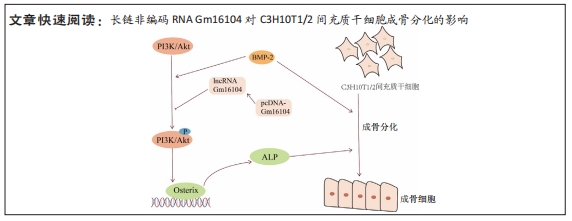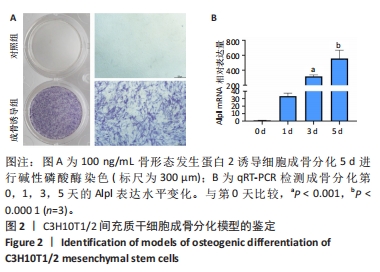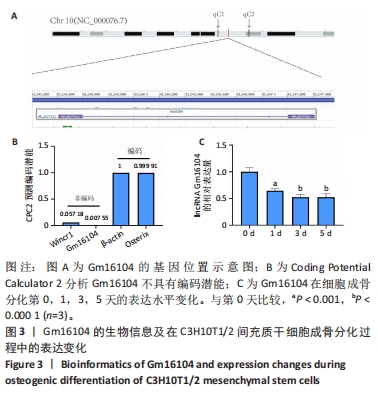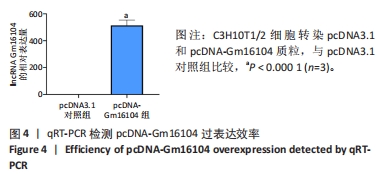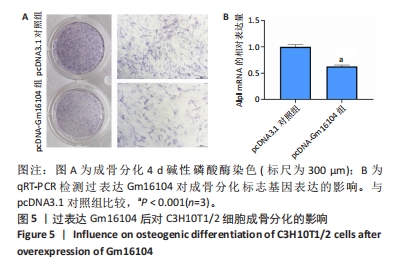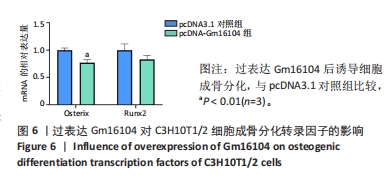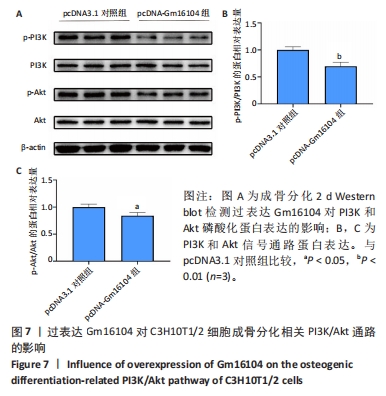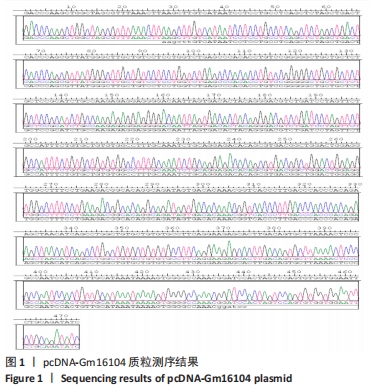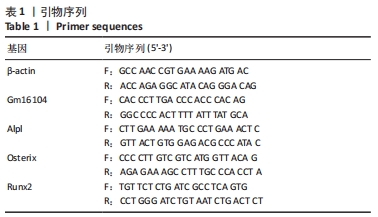[1] YI H, UR REHMAN F, ZHAO C, et al. Recent advances in nano scaffolds for bone repair. Bone Res. 2016;4:16050.
[2] HERNIGOU P, POIGNARD A, MANICOM O, et al. The use of percutaneous autologous bone marrow transplantation in nonunion and avascular necrosis of bone. J Bone Joint Surg Br. 2005;87(7):896-902.
[3] ZHA K, TIAN Y, PANAYI AC, et al. Recent Advances in Enhancement Strategies for Osteogenic Differentiation of Mesenchymal Stem Cells in Bone Tissue Engineering. Front Cell Dev Biol. 2022;10:824812.
[4] CONFALONIERI D, SCHWAB A, WALLES H, et al. Advanced Therapy Medicinal Products: A Guide for Bone Marrow-derived MSC Application in Bone and Cartilage Tissue Engineering. Tissue Eng Part B Rev. 2018;24(2):155-169.
[5] KHOSLA S, WESTENDORF JJ, OURSLER MJ. Building bone to reverse osteoporosis and repair fractures. J Clin Invest. 2008;118(2):421-428.
[6] LIN S, MAEKAWA H, MOEINZADEH S, et al. An osteoinductive and biodegradable intramedullary implant accelerates bone healing and mitigates complications of bone transport in male rats. Nat Commun. 2023;14(1):4455.
[7] SCARFÌ S. Use of bone morphogenetic proteins in mesenchymal stem cell stimulation of cartilage and bone repair. World J Stem Cells. 2016;8(1):1-12.
[8] ENCODE PROJECT CONSORTIUM. An integrated encyclopedia of DNA elements in the human genome. Nature. 2012;489(7414):57-74.
[9] DE LA FUENTE-HERNANDEZ MA, SARABIA-SANCHEZ MA, MELENDEZ-ZAJGLA J, et al. lncRNAs in mesenchymal differentiation. Am J Physiol Cell Physiol. 2022; 322(3):C421-C460.
[10] BRIDGES MC, DAULAGALA AC, KOURTIDIS A. LNCcation: lncRNA localization and function. J Cell Biol. 2021;220(2):e202009045.
[11] KOPP F, MENDELL JT. Functional Classification and Experimental Dissection of Long Noncoding RNAs. Cell. 2018;172(3):393-407.
[12] WU Q, ZHANG H, YANG D, et al. The m6A-induced lncRNA CASC8 promotes proliferation and chemoresistance via upregulation of hnRNPL in esophageal squamous cell carcinoma. Int J Biol Sci. 2022;18(13):4824-4836.
[13] AO X, DING W, LI X, et al. Non-coding RNAs regulating mitochondrial function in cardiovascular diseases. J Mol Med (Berl). 2023;101(5):501-526.
[14] ZHANG W, ZHAO J, DENG L, et al. INKILN is a Novel Long Noncoding RNA Promoting Vascular Smooth Muscle Inflammation via Scaffolding MKL1 and USP10. Circulation. 2023;148(1):47-67.
[15] WANG Z, ZHOU Y, DAI Z, et al. A Novel Long Noncoding RNA, Lnc-OAD, Is Required for Bone Morphogenetic Protein 2- (BMP-2-) Induced Osteoblast Differentiation. Biomed Res Int. 2021;2021:6697749.
[16] CHEN Z, GAN L, CHEN X, et al. LncRNA HOTAIRM1 promotes dental follicle stem cell-mediated bone regeneration by regulating HIF-1α/KDM6/EZH2/H3K27me3 axis. J Cell Physiol. 2023;238(7):1542-1557.
[17] ZUO C, WANG Z, LU H, et al. Expression profiling of lncRNAs in C3H10T1/2 mesenchymal stem cells undergoing early osteoblast differentiation. Mol Med Rep. 2013;8(2):463-467.
[18] CROCKETT JC, ROGERS MJ, COXON FP, et al. Bone remodelling at a glance. J Cell Sci. 2011;124(Pt 7):991-998.
[19] VIMALRAJ S. Alkaline phosphatase: Structure, expression and its function in bone mineralization. Gene. 2020;754:144855.
[20] XIE Y, ZHOU J, TIAN L, et al. miR-196b-5p Regulates Osteoblast and Osteoclast Differentiation and Bone Homeostasis by Targeting SEMA3A. J Bone Miner Res. 2023;38(8):1175-1191.
[21] YU R, HAN H, CHU S, et al. CUL4B orchestrates mesenchymal stem cell commitment by epigenetically repressing KLF4 and C/EBPδ. Bone Res. 2023; 11(1):29.
[22] XU H, WANG C, LIU C, et al. Cotransplantation of mesenchymal stem cells and endothelial progenitor cells for treating steroid-induced osteonecrosis of the femoral head. Stem Cells Transl Med. 2021;10(5):781-796.
[23] PONTING CP, OLIVER PL, REIK W. Evolution and functions of long noncoding RNAs. Cell. 2009;136(4):629-641.
[24] AN F, WANG X, WANG C, et al. Research progress on the role of lncRNA-miRNA networks in regulating adipogenic and osteogenic differentiation of bone marrow mesenchymal stem cells in osteoporosis. Front Endocrinol (Lausanne). 2023;14:1210627.
[25] LE G, LU M, LI L, et al. The Lnc-HOTAIR/miR122/PPARγ signaling mediated the occurrence and continuous development of alcohol-induced Osteonecrosis of the femoral head. Toxicol Lett. 2023;380:53-61.
[26] PENG S, HE T, LIU Y, et al. Lnc-PPP2R1B Mediates the Alternative Splicing of PPP2R1B by Interacting and Stabilizing HNRNPLL and Promotes Osteogenesis of MSCs. Stem Cell Rev Rep. 2023;19(6):1981-1993.
[27] TYE CE, GHULE PN, GORDON JAR, et al. LncMIR181A1HG is a novel chromatin-bound epigenetic suppressor of early stage osteogenic lineage commitment. Sci Rep. 2022;12(1):7770.
[28] GAO H, DONG H, ZHENG J, et al. LINC01119 negatively regulates osteogenic differentiation of mesenchymal stem cells via the Wnt pathway by targeting FZD4. Stem Cell Res Ther. 2022;13(1):43.
[29] NAKASHIMA K, ZHOU X, KUNKEL G, et al. The novel zinc finger-containing transcription factor osterix is required for osteoblast differentiation and bone formation. Cell. 2002;108(1):17-29.
[30] ZHOU X, ZHANG Z, FENG JQ, et al. Multiple functions of Osterix are required for bone growth and homeostasis in postnatal mice. Proc Natl Acad Sci U S A. 2010; 107(29):12919-12924.
[31] LIU Q, LI M, WANG S, et al. Recent Advances of Osterix Transcription Factor in Osteoblast Differentiation and Bone Formation. Front Cell Dev Biol. 2020;8: 601224.
[32] HE S, YANG S, ZHANG Y, et al. LncRNA ODIR1 inhibits osteogenic differentiation of hUC-MSCs through the FBXO25/H2BK120ub/H3K4me3/OSX axis. Cell Death Dis. 2019;10(12):947.
[33] SHEN J, SUN Y, LIU X, et al. EGFL6 regulates angiogenesis and osteogenesis in distraction osteogenesis via Wnt/β-catenin signaling. Stem Cell Res Ther. 2021;12(1):415.
[34] LIU S, YAN X, GUO J, et al. Periodontal ligament-associated protein-1 knockout mice regulate the differentiation of osteoclasts and osteoblasts through TGF-β1/Smad signaling pathway. J Cell Physiol. 2023. doi: 10.1002/jcp.31062.
[35] HUANG X, XIAO J, WANG H, et al. CKIP-1 mediates P. gingivalis-suppressed osteogenic/cementogenic differentiation of periodontal ligament cells partially via p38 signaling pathway. J Oral Microbiol. 2023;15(1):2236427.
[36] CHEN X, CHEN W, AUNG ZM, et al. LY3023414 inhibits both osteogenesis and osteoclastogenesis through the PI3K/Akt/GSK3 signalling pathway. Bone Joint Res. 2021;10(4):237-249.
[37] DE SANTIS MC, GULLUNI F, CAMPA CC, et al. Targeting PI3K signaling in cancer: Challenges and advances. Biochim Biophys Acta Rev Cancer. 2019;1871(2):361-366.
[38] VANHAESEBROECK B, GUILLERMET-GUIBERT J, GRAUPERA M, et al. The emerging mechanisms of isoform-specific PI3K signalling. Nat Rev Mol Cell Biol. 2010;11(5):329-341.
[39] SUN K, LUO J, GUO J, et al. The PI3K/AKT/mTOR signaling pathway in osteoarthritis: a narrative review. Osteoarthritis Cartilage. 2020;28(4):400-409.
[40] GHOSH-CHOUDHURY N, ABBOUD SL, NISHIMURA R, et al. Requirement of BMP-2-induced phosphatidylinositol 3-kinase and Akt serine/threonine kinase in osteoblast differentiation and Smad-dependent BMP-2 gene transcription. J Biol Chem. 2002;277(36):33361-33368.
[41] JING WB, JI H, JIANG R, et al. Astragaloside positively regulated osteogenic differentiation of pre-osteoblast MC3T3-E1 through PI3K/Akt signaling pathway. J Orthop Surg Res. 2021;16(1):579.
|
